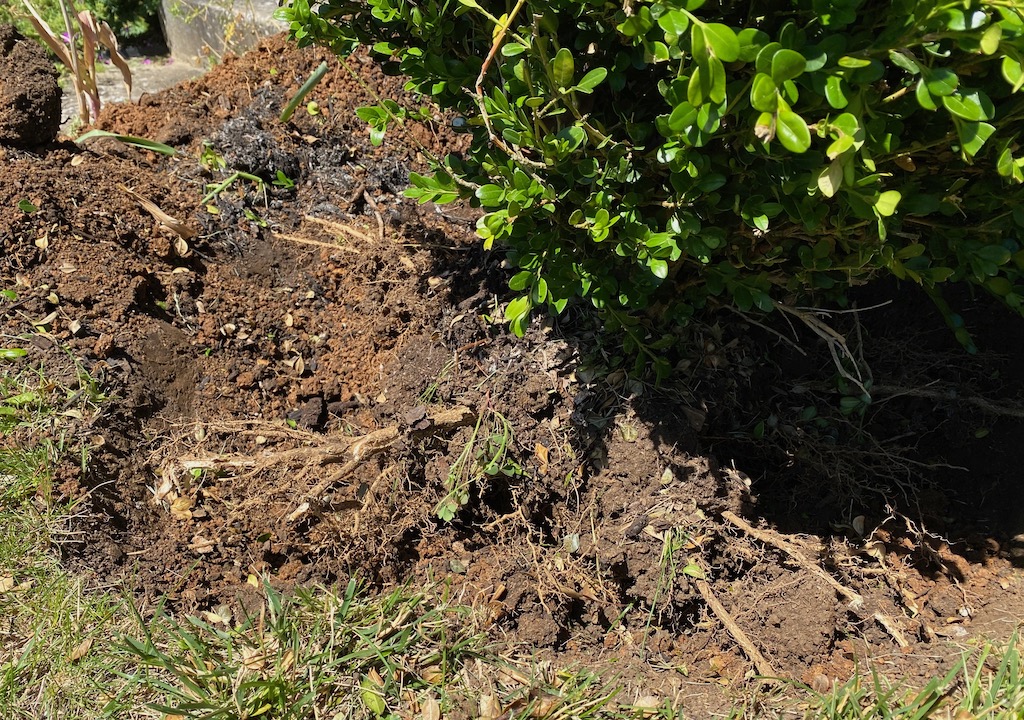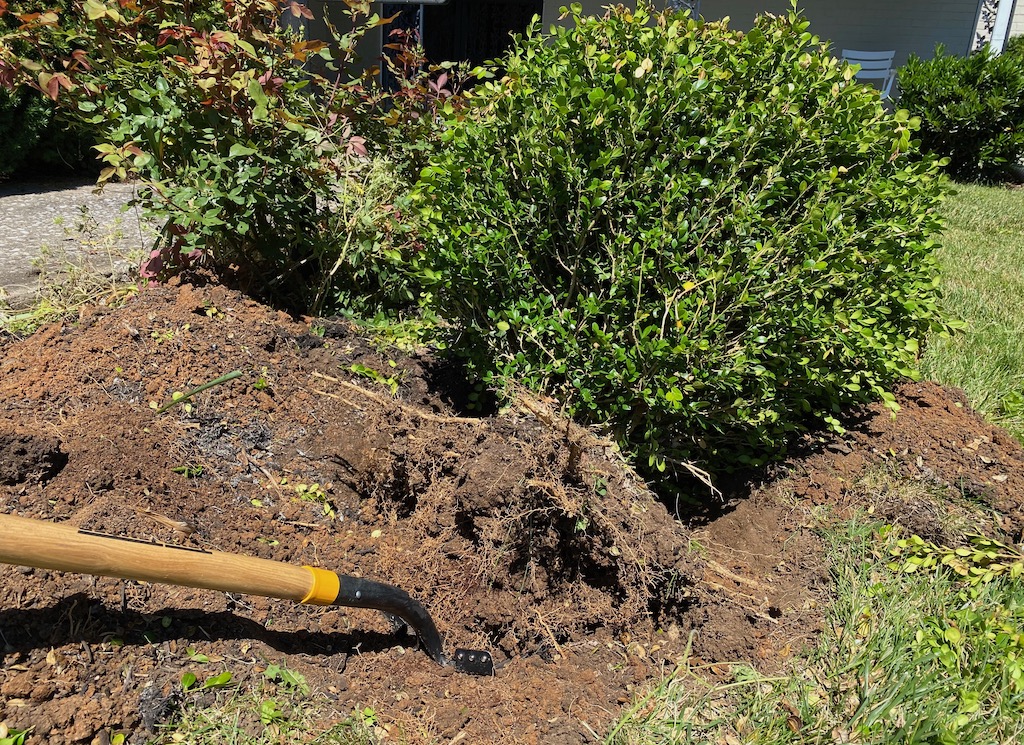I’ve known for months that a shrub in my front yard needed to be moved, but all through the fall, winter, and most of the spring, I avoided doing anything about it. It was a big project and I was focused on other things.
There was nothing wrong with the plant itself, but it was out of balance with its surroundings. It obscured the once-visible house number and blocked the roses trying to grow nearby. This happened little by little, the barely perceptible daily change imparting no sense of urgency. The encroachment grew, until a few days ago when something changed.

The tide of emotion moving through this nation and washing over me needed some kind of release. Grief and pain and anger over injustice is finally permeating our individual and collective psyche at a level we’ve never experienced before. And on that particular day, not knowing what to do about the larger picture, I found myself wrestling with the simpler task in front of me.
I cut into the ground with the tip of my shovel, making a circle wider than the reach of the shrub’s branches. I put my whole body into it, gripping the handle, foot on metal, shoving the blade into the soil with all the strength I could muster. Yet I also worked carefully. This bush was rooted in the wrong place and causing problems in the landscape, but I didn’t want to destroy it. Instead, I wanted to resituate it elsewhere.
When the underground structure was finally exposed, I was able to tip the shrub over. The root system ripped free with the sound of a thousand filaments breaking, muffled by the earth. One root, inexplicably longer and larger than the others, I had to cut with a pruner. I didn’t want to harm the plant, but I was doing violence to its intention to remain.
As I dug and sweated and pulled on those roots I held the question of where I was planted, and in what ways I might be rooted in the wrong place. I held the question of how our collective landscape needs to be remade, and what my part might be.

I continue asking, praying the question of what I can offer to support change, how I can act in a way that is compassionate and responsible. The answers take time. The questions are seeds, and I’m tending the ground where they can grow.
The shrub is doing well so far in its new location. I watch its leaves and water it well, willing it to take hold in this better place. The leaves are indicators but the important work is below ground. That’s where the hidden roots make their connection with new soil.
Beneath the ground unfolds a process that despite its familiarity remains a mystery. The seeds of questions we’re willing to ask break open, pushing new life up into the sunlight.
Susan Christerson Brown
